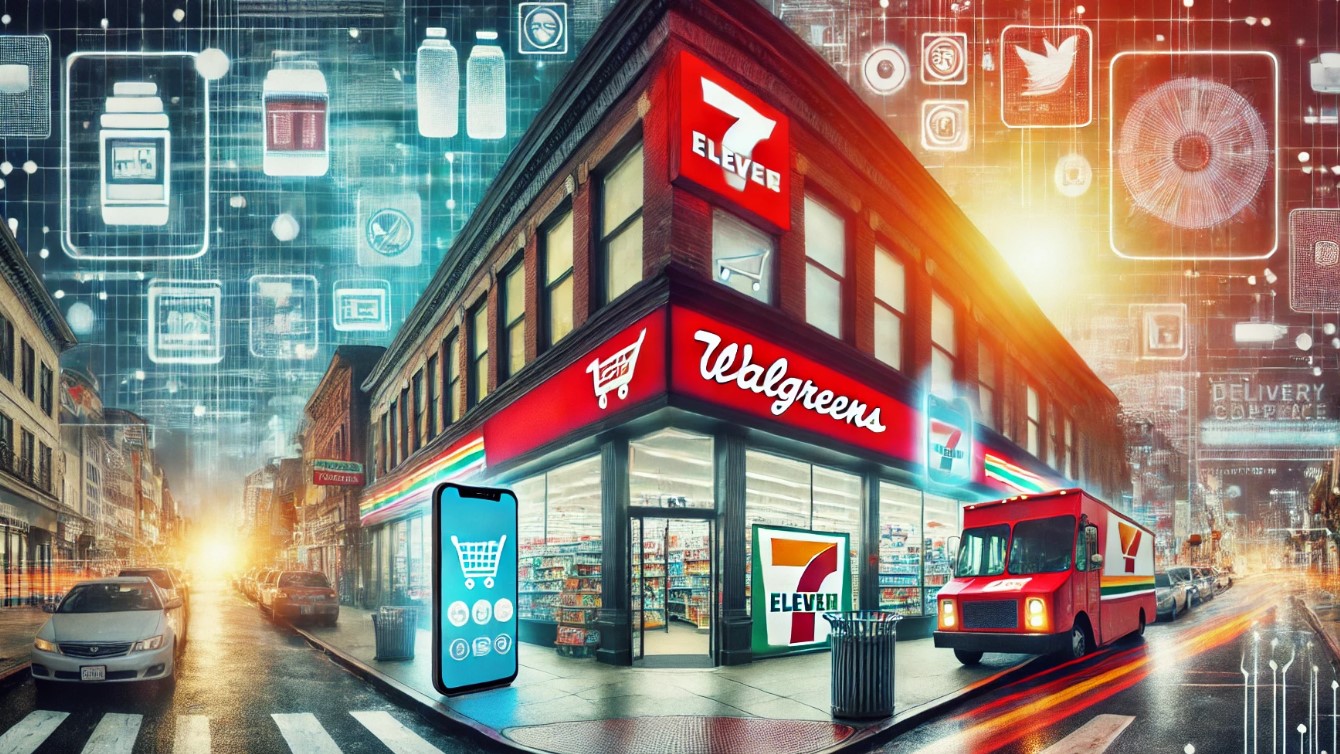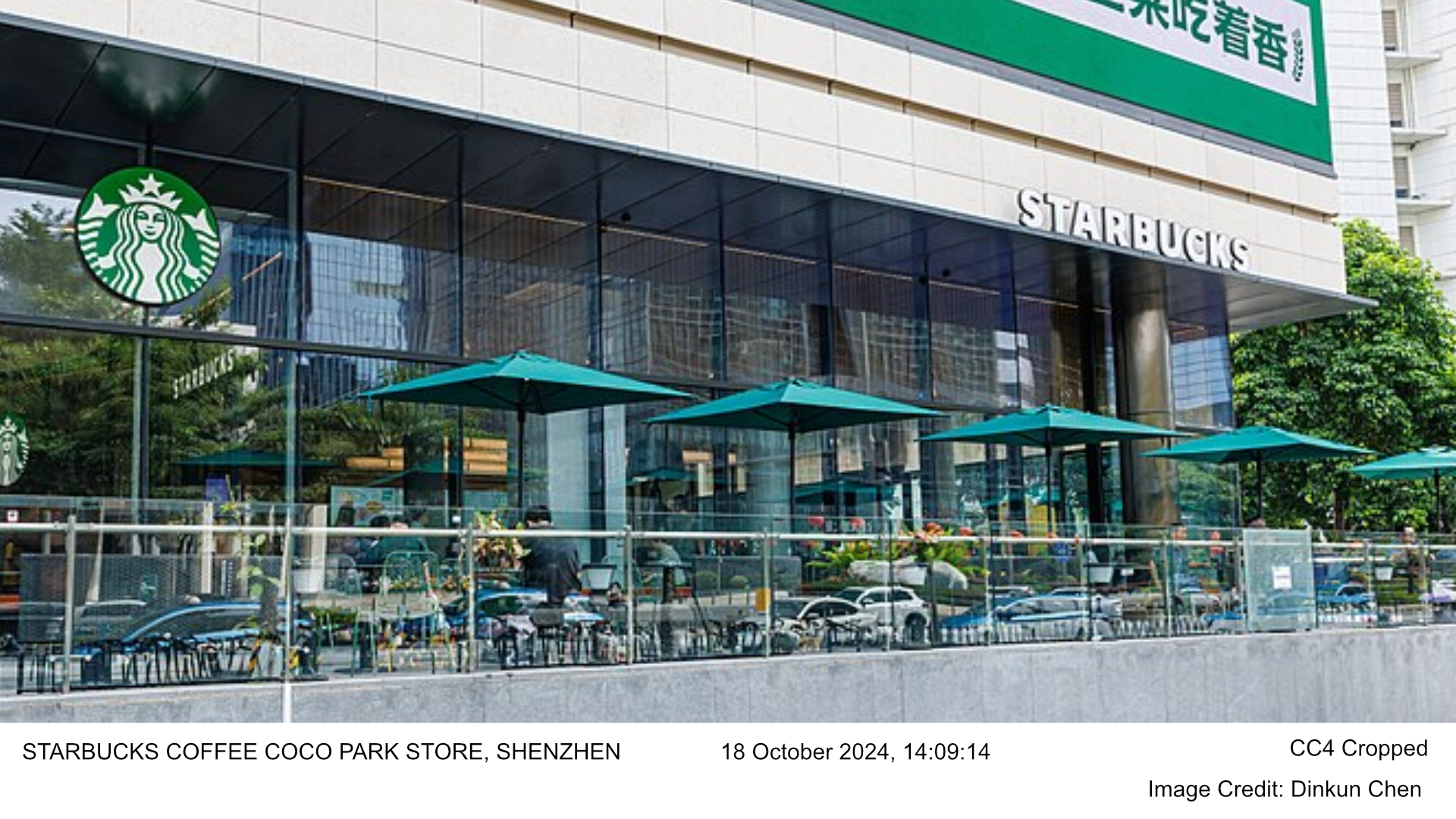The retail landscape is undergoing significant transformations as companies adapt to changing consumer preferences and economic pressures. Recent announcements from major retailers such as Walgreens and 7-Eleven highlight the challenges faced by traditional retail chains in a rapidly evolving market environment. These companies are making strategic decisions to close stores and shift their focus to align with current consumer demands.
- Store Closures as Strategic Moves: Walgreens plans to close 1,200 stores, and 7-Eleven will close 444 stores across North America, as both retailers reassess underperforming locations to optimize operations amid economic pressures.
- Shifting Focus: Walgreens is expanding its health and wellness services to meet rising demand, while 7-Eleven is pivoting towards fresh food and specialty beverages to cater to consumers seeking affordable, convenient meal options.
- Impact of E-Commerce: Both retailers face increasing competition from online shopping, driving their investments in digital capabilities and the enhancement of their online platforms to meet changing consumer preferences.
- Economic Influences: Inflation and shifting consumer spending habits are leading retailers to focus on value-driven offerings, ensuring affordability while positioning themselves for long-term growth.
Walgreens, a leading drugstore chain, has announced plans to close 1,200 stores over the next three years. This move is part of a broader effort to revitalize its U.S. operations amidst increasing competition from online retailers and changing customer preferences. The company aims to streamline its operations and invest in digital capabilities while maintaining a strong retail presence in key markets. Walgreens’ focus on expanding health and wellness services reflects the growing demand for accessible healthcare solutions.
Similarly, 7-Eleven, a prominent convenience store chain, is set to close 444 stores across North America. The decision comes in response to economic pressures, including inflation and declining store traffic. The company is pivoting towards offering fresh food and specialty beverages to cater to consumers seeking affordable meal options. This strategic shift is aimed at enhancing customer satisfaction and strengthening 7-Eleven’s position in the competitive convenience store market.
Reports from CNBC and NPR indicate that both companies are reassessing their store portfolios to optimize their market presence. By focusing on underperforming locations, Walgreens and 7-Eleven can redirect resources towards areas with higher demand potential. This approach not only helps in cost management but also allows these companies to invest in growth opportunities aligned with evolving consumer trends.
The announcements of store closures by Walgreens and 7-Eleven come amid broader trends in the retail industry. Traditional retailers are increasingly challenged by the rise of e-commerce and changing consumer habits. As consumers become more digitally savvy, there is a growing preference for online shopping and personalized experiences. Retailers are responding by investing in technology and enhancing their online platforms to meet these expectations.
Moreover, economic factors such as inflation and interest rates are influencing consumer spending patterns. Companies like Walgreens and 7-Eleven are adjusting their strategies to accommodate these shifts, recognizing the need for affordability and value-driven offerings. By focusing on strategic growth areas, these retailers aim to remain competitive and resilient in the face of economic uncertainties.
The evolving retail landscape underscores the importance of adaptability and innovation for traditional retail chains. As companies like Walgreens and 7-Eleven navigate these changes, their ability to anticipate consumer needs and respond effectively will determine their long-term success. By embracing digital transformation and optimizing store portfolios, these retailers are positioning themselves to thrive in a dynamic market environment.
The History of Walgreens: From a Single Store to a Retail Pharmacy Giant
Walgreens, one of the most recognizable pharmacy chains in the United States, has a long and storied history that stretches back over a century. From its humble beginnings as a single drugstore in Chicago to its status as one of the largest retail pharmacy chains in the world, Walgreens has played a major role in shaping the way Americans access healthcare and pharmaceuticals. Throughout its history, the company has been at the forefront of innovation, customer service, and community care, solidifying its place in the fabric of American retail.
The Early Years: Charles R. Walgreen’s Vision
The story of Walgreens began in 1901, when Charles R. Walgreen, a young pharmacist with a passion for providing quality products and services, purchased a small drugstore in Chicago’s South Side. Born in 1873 in Galesburg, Illinois, Walgreen had initially pursued a career as a pharmacist after suffering an injury while working in a shoe factory. This injury changed the trajectory of his life, leading him into the world of pharmaceuticals.
Walgreen quickly built a reputation for his commitment to customer service and his innovative approach to running the business. Unlike many of his competitors, who focused solely on selling pharmaceuticals, Walgreen believed in creating an inviting and customer-friendly atmosphere. He began offering a wider range of products and services, including an innovative soda fountain, which would become a signature feature of Walgreens stores in the years to come.
Expansion and Innovation in the 1920s
As the demand for his unique retail model grew, so did the business. By 1916, Walgreens had expanded to four stores, and by 1920, that number had grown to 20. During this time, Walgreen introduced several innovations that helped set his stores apart from the competition.
One of the most famous of these innovations was the malted milkshake, which debuted at Walgreens soda fountains in 1922. The malted milkshake quickly became a nationwide sensation, drawing customers into Walgreens stores for more than just medicine. This innovation not only boosted sales but also made Walgreens a community hub where customers could gather and enjoy a treat.
In addition to the malted milkshake, Walgreen introduced a system of self-service that was revolutionary for its time. Traditionally, drugstore customers had to rely on clerks to retrieve items for them, but Walgreen allowed customers to browse and select their own products, a concept that would later become standard in retail.
Surviving the Great Depression
Despite the economic hardships of the Great Depression in the 1930s, Walgreens continued to expand. The company grew to over 500 stores by the end of the decade, thanks in part to Charles Walgreen’s commitment to affordability and innovation. During the Depression, Walgreens lowered prices on essential goods and introduced low-cost prescriptions, helping customers manage the financial strain of the era while maintaining loyalty to the brand.
By the end of the 1930s, Walgreens had cemented its status as one of the largest and most successful pharmacy chains in the United States, with stores expanding from the Midwest to other parts of the country.
Post-War Growth and Diversification
The post-World War II era saw Walgreens continue to evolve and diversify its offerings. The booming post-war economy and suburban expansion in the 1950s and 1960s created opportunities for Walgreens to open new stores in suburban areas across the United States. This era also marked a shift in the company’s strategy, with a focus on expanding its product range beyond just pharmaceuticals.
In the 1950s, Walgreens became one of the first companies to open 24-hour stores, catering to customers who needed medications and other products around the clock. This move was another example of how Walgreens sought to meet customer needs in innovative ways, setting the standard for modern pharmacy retailing.
In 1968, Walgreens opened its 1,000th store and continued to diversify its product offerings, introducing photo services, beauty products, and healthcare items. These additions helped Walgreens become a one-stop shop for consumers, providing everything from prescriptions to everyday household essentials.
Technological Advancements and Prescription Services
The 1980s and 1990s were marked by significant technological advancements that transformed the way Walgreens operated. The company became a pioneer in the use of computerized pharmacy systems, which allowed pharmacists to keep better records of patient prescriptions, track drug interactions, and improve the accuracy of prescription dispensing. This focus on technology helped streamline operations and enhance customer service.
In 1991, Walgreens introduced intercom plus, a pharmacy computer system that linked all Walgreens stores nationwide, making it easier for customers to fill prescriptions at any location. This system became a hallmark of Walgreens’ commitment to customer convenience and pharmacy care.
The 21st Century: Expansion and Modernization
In the early 2000s, Walgreens continued its aggressive expansion, opening new stores at a rapid pace. By 2005, Walgreens had more than 5,000 locations across the United States, and it continued to innovate with the introduction of drive-thru pharmacies and online prescription refills through its website and mobile app, adapting to changing consumer behaviors in the digital age.
In 2014, Walgreens took a major step in its global expansion by merging with the Swiss-based pharmacy giant Alliance Boots, creating Walgreens Boots Alliance. This merger made Walgreens part of the first global pharmacy-led health and wellness enterprise, expanding its reach into Europe and beyond.
Walgreens and Healthcare Services
In recent years, Walgreens has shifted toward becoming more than just a retail pharmacy chain. The company has increasingly focused on providing healthcare services, partnering with healthcare providers and insurers to offer in-store health clinics and expanding access to vaccinations, primary care, and telemedicine services. Walgreens’ role in the fight against the COVID-19 pandemic, particularly in administering vaccines across the U.S., demonstrated its growing importance in healthcare delivery.
Conclusion: A Legacy of Innovation and Service
From its modest beginnings as a single drugstore in Chicago, Walgreens has grown into one of the largest and most influential pharmacy chains in the world, with over 9,000 locations across the United States. The company’s success is rooted in its commitment to innovation, customer service, and community care. Whether it was the introduction of the self-service drugstore model, the iconic malted milkshake, or 24-hour pharmacy services, Walgreens has continuously adapted to meet the changing needs of its customers.
The History of 7-Eleven: From an Icehouse to a Global Convenience Giant
7-Eleven, the world’s largest convenience store chain, is synonymous with quick, easy access to everyday essentials. With over 83,000 stores in 19 countries, 7-Eleven has become an integral part of daily life for millions of people worldwide. But its journey from a small icehouse in Texas to a global convenience empire is a fascinating story of innovation, expansion, and adapting to consumer needs.
The Humble Beginnings: The Southland Ice Company
The origins of 7-Eleven trace back to 1927, when Joe C. Thompson Sr. founded the Southland Ice Company in Dallas, Texas. Initially, the company sold ice to households to keep food fresh in the pre-refrigeration era. However, Thompson quickly recognized an opportunity to expand the product offering beyond just ice. He began stocking everyday essentials such as milk, bread, and eggs, making it more convenient for customers to pick up basic items when they bought their ice.
This idea of combining ice sales with grocery items was groundbreaking and proved popular with customers. It was one of the earliest forms of the convenience store model, offering people a quick and easy way to buy essentials without going to a full-service grocery store.
The Birth of Tote’m: Expanding the Convenience Concept
By 1928, Thompson had expanded the idea to several locations, creating what would eventually become the first chain of convenience stores. These stores were originally called Tote’m, a name that reflected the concept of “toting” away groceries and supplies.
As part of the store’s branding, some locations featured totem poles outside, which were meant to symbolize the connection to Native American heritage and grab the attention of passersby. Tote’m stores were open from 7 a.m. to 11 p.m., seven days a week—much longer hours than typical grocery stores of the time.
The extended hours, combined with the store’s proximity to residential neighborhoods, made Tote’m incredibly popular with customers. The longer hours allowed working people to shop outside of traditional grocery store hours, making the stores a convenient option for busy families.
Rebranding as 7-Eleven: A Name That Stuck
In 1946, the Tote’m name was officially changed to 7-Eleven, reflecting the stores’ extended operating hours of 7 a.m. to 11 p.m. This new name emphasized the store’s unique value proposition of being open longer than other retailers, a key advantage in the convenience market.
While 7-Eleven’s original hours were considered long at the time, the company pioneered the 24-hour business model in 1963 at its Austin, Texas location, which stayed open all night to accommodate late-night customers during the University of Texas football games. The 24-hour format proved so successful that it was adopted at other locations, eventually becoming the standard for many 7-Eleven stores worldwide.
The Introduction of the Slurpee and Big Gulp: Defining the Brand
In the 1960s, 7-Eleven introduced one of its most iconic products: the Slurpee. Originally called the ICEE, this frozen, carbonated beverage quickly became a fan favorite, and by the late 1960s, 7-Eleven rebranded the drink as the Slurpee. The name came from the “slurp” sound people made while drinking it. The Slurpee has since become one of 7-Eleven’s signature products, with new flavors being introduced regularly.
In the 1970s, 7-Eleven introduced another iconic product—the Big Gulp, a large-size fountain drink. Initially offered in a 32-ounce cup, the Big Gulp became a symbol of American convenience culture and was an instant hit with customers who enjoyed the option of a larger, affordable beverage. Over time, the Big Gulp grew in size, with the Super Big Gulp (44 oz.) and Double Gulp (64 oz.) becoming part of the lineup, making 7-Eleven a go-to destination for on-the-go drinks.
These product innovations helped 7-Eleven stand out from its competitors, solidifying its reputation for offering unique, customer-friendly products that cater to the needs of everyday shoppers.
Global Expansion: Becoming a Worldwide Convenience Leader
By the 1970s, 7-Eleven was rapidly expanding across the United States, with stores in suburban areas, cities, and near highways. Its success in the U.S. led the company to explore opportunities overseas. In 1974, 7-Eleven opened its first international store in Japan, marking the beginning of its global footprint.
Interestingly, the Japanese market would eventually play a pivotal role in the company’s future. In 1991, the Japanese company Ito-Yokado, a major retail group, became the largest shareholder in 7-Eleven’s parent company. This move helped the company navigate through financial difficulties during that period and solidified Japan as one of 7-Eleven’s strongest markets. The brand’s success in Japan continues today, with over 21,000 stores, making it one of the most popular convenience chains in the country.
Following its success in Japan, 7-Eleven continued expanding into other international markets. Today, 7-Eleven operates stores in countries like Canada, Australia, Thailand, Taiwan, the Philippines, and South Korea, making it a global leader in the convenience store industry.
Reinventing Convenience: The Digital Age and Beyond
In recent years, 7-Eleven has adapted to changing consumer behaviors by embracing digital technologies and expanding its offerings beyond just physical stores. The company launched its 7NOW delivery service, allowing customers to order items from their local 7-Eleven for home delivery. Additionally, 7-Eleven introduced the 7Rewards loyalty program, where customers can earn points and rewards for their purchases, driving repeat business and customer loyalty.
As the convenience store industry evolves, 7-Eleven continues to innovate. The company has added more healthy food options, including fresh fruit, salads, and sandwiches, catering to the growing demand for better-for-you products. It has also expanded its selection of ready-to-eat meals, coffee, and premium snacks to attract a broader customer base.
In 2020, 7-Eleven made headlines again by acquiring Speedway, a chain of convenience stores with gas stations across the U.S., further expanding its market share and consolidating its position as a convenience store powerhouse.
7-Eleven’s Cultural Impact
Beyond its product innovations and business expansion, 7-Eleven has become a cultural icon, particularly in the U.S. Its iconic products, such as the Slurpee and Big Gulp, have become part of everyday life for many, and its 24/7 service has redefined what consumers expect from convenience stores.
Each year on July 11th (7/11), the company celebrates “7-Eleven Day” by giving away free Slurpees, a tradition that has become a favorite among loyal customers. This event highlights the brand’s commitment to customer engagement and community.





![A Big Lots store in [[Murphy, North Carolina]] 7 April 2023, 16:39:50](https://newnooz.com/news/wp-content/uploads/2024/12/Big_lots-NEW_NOOZ.jpg)